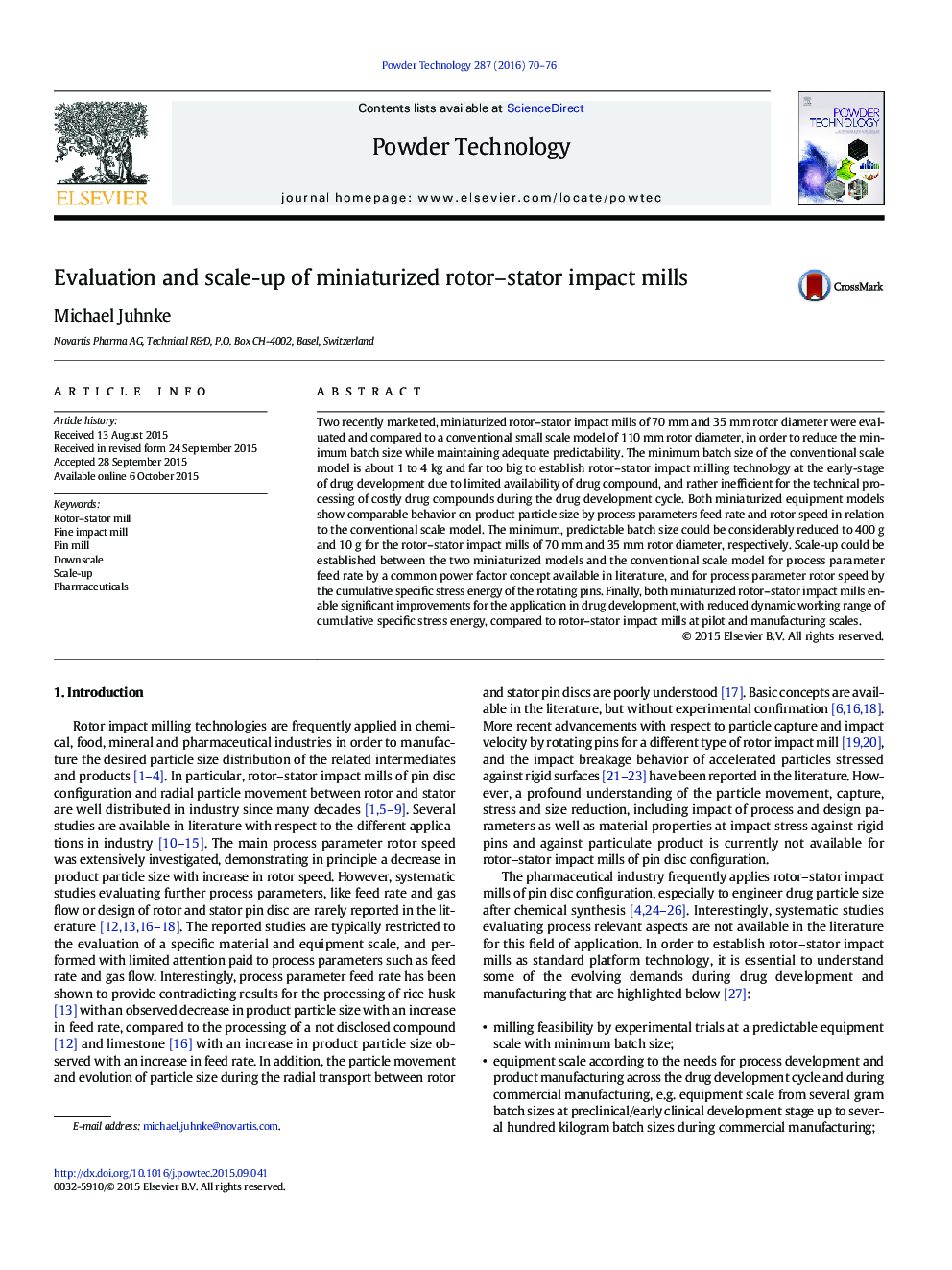| Article ID | Journal | Published Year | Pages | File Type |
|---|---|---|---|---|
| 235160 | Powder Technology | 2016 | 7 Pages |
•Evaluation of two recently marketed miniaturized rotor–stator impact mills•Scale-up established between the evaluated models and a conventional equipment model•Significant batch size reduction could be established.
Two recently marketed, miniaturized rotor–stator impact mills of 70 mm and 35 mm rotor diameter were evaluated and compared to a conventional small scale model of 110 mm rotor diameter, in order to reduce the minimum batch size while maintaining adequate predictability. The minimum batch size of the conventional scale model is about 1 to 4 kg and far too big to establish rotor–stator impact milling technology at the early-stage of drug development due to limited availability of drug compound, and rather inefficient for the technical processing of costly drug compounds during the drug development cycle. Both miniaturized equipment models show comparable behavior on product particle size by process parameters feed rate and rotor speed in relation to the conventional scale model. The minimum, predictable batch size could be considerably reduced to 400 g and 10 g for the rotor–stator impact mills of 70 mm and 35 mm rotor diameter, respectively. Scale-up could be established between the two miniaturized models and the conventional scale model for process parameter feed rate by a common power factor concept available in literature, and for process parameter rotor speed by the cumulative specific stress energy of the rotating pins. Finally, both miniaturized rotor–stator impact mills enable significant improvements for the application in drug development, with reduced dynamic working range of cumulative specific stress energy, compared to rotor–stator impact mills at pilot and manufacturing scales.
Graphical abstractFigure optionsDownload full-size imageDownload as PowerPoint slide
